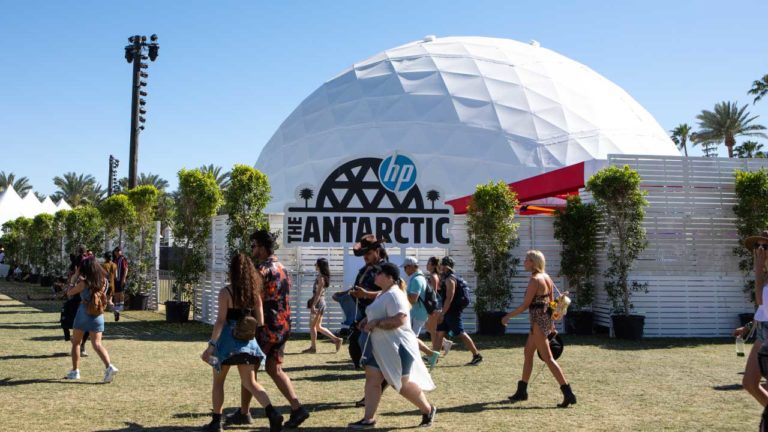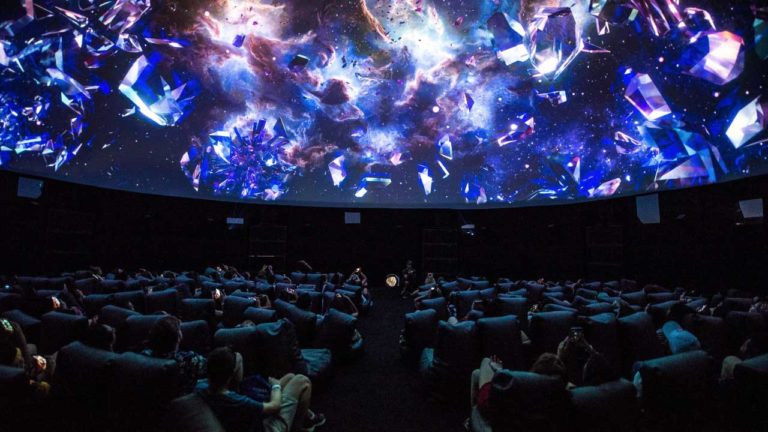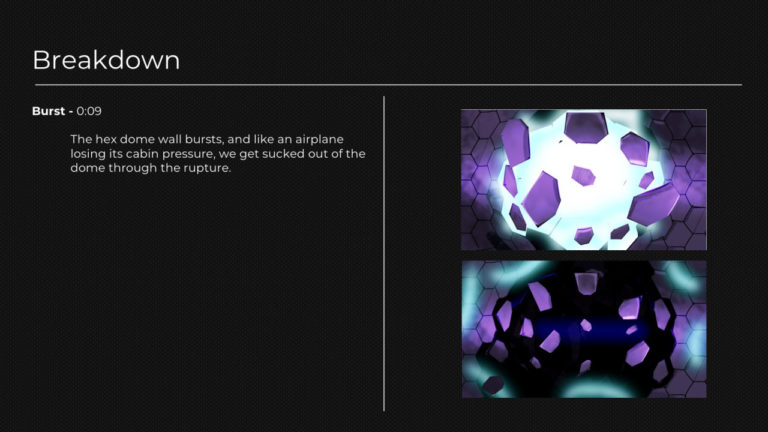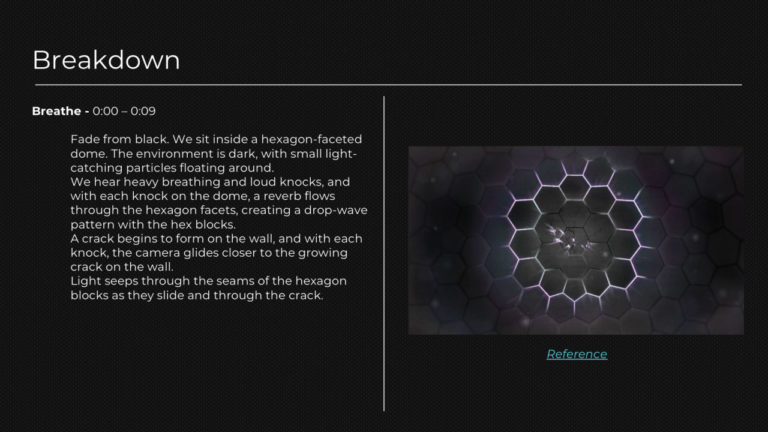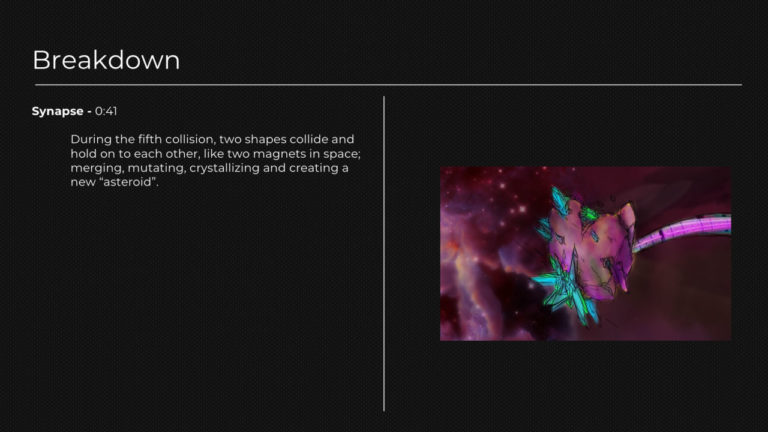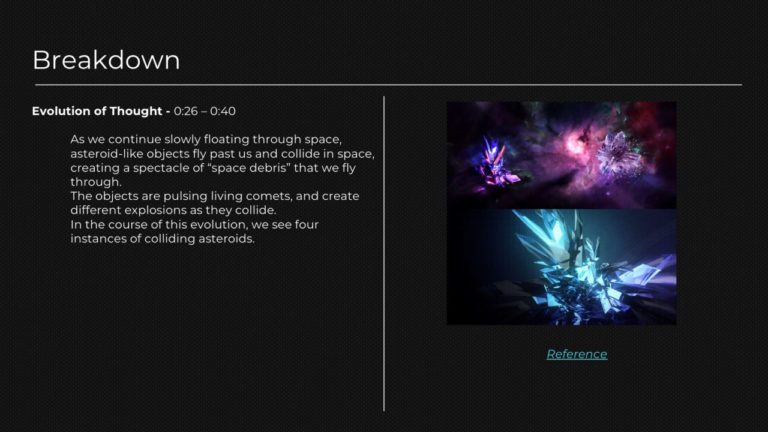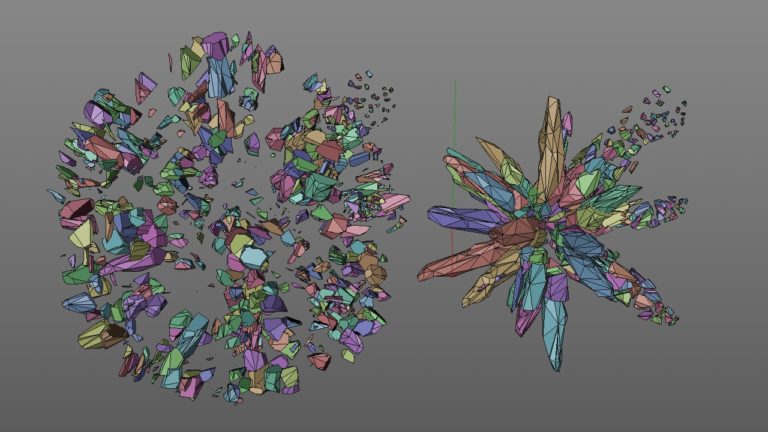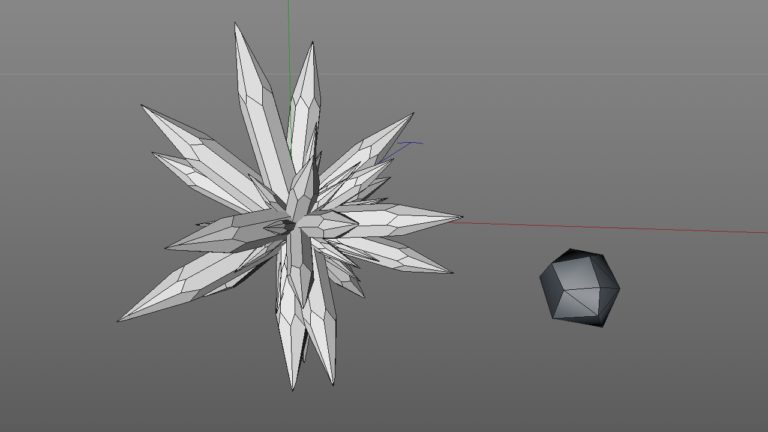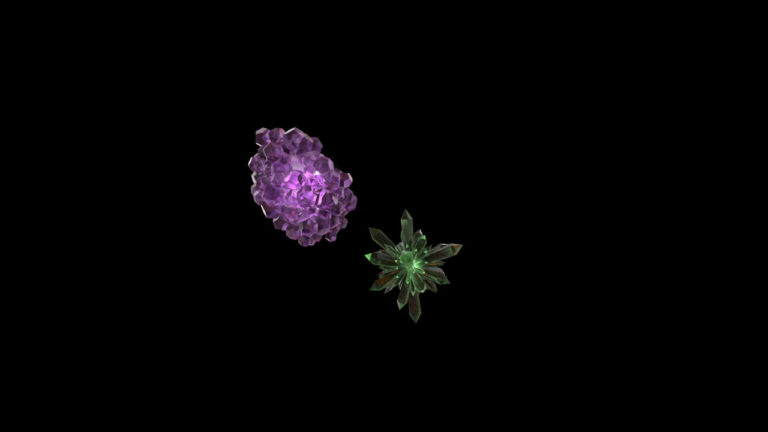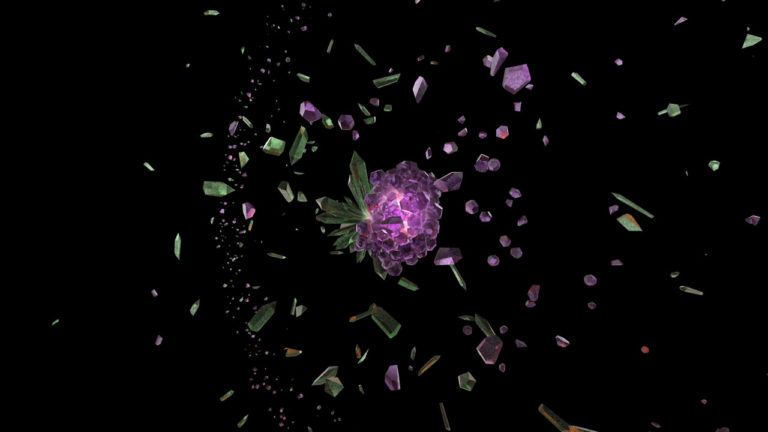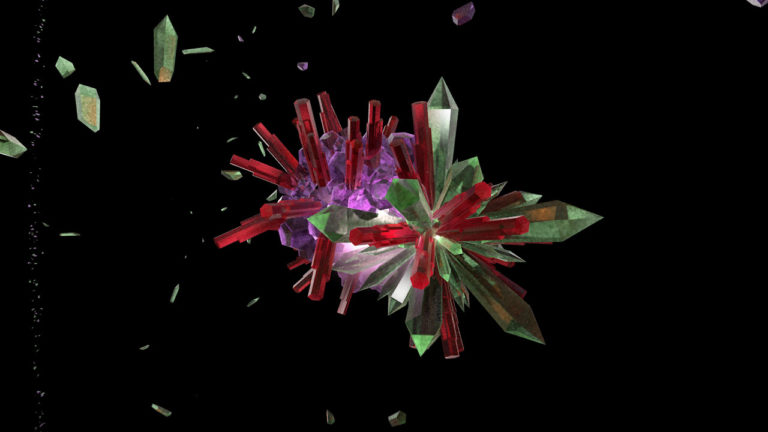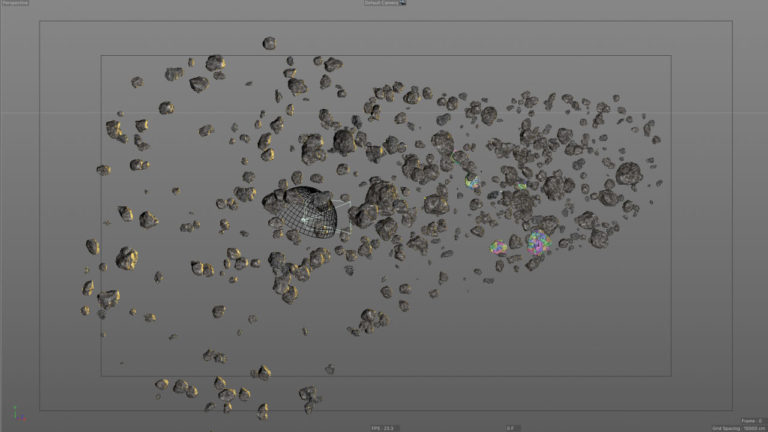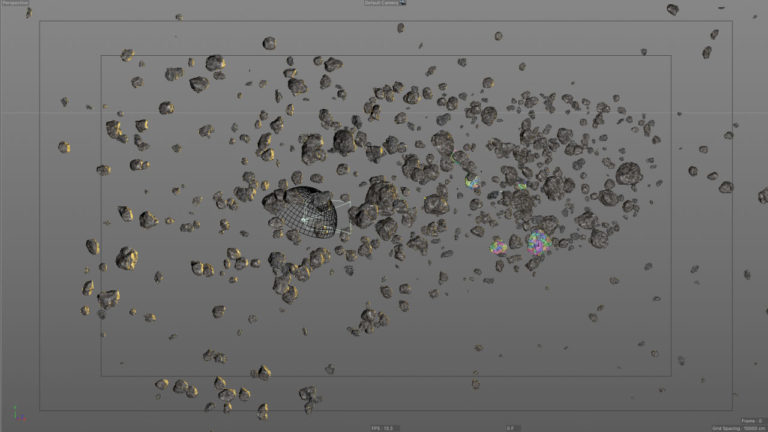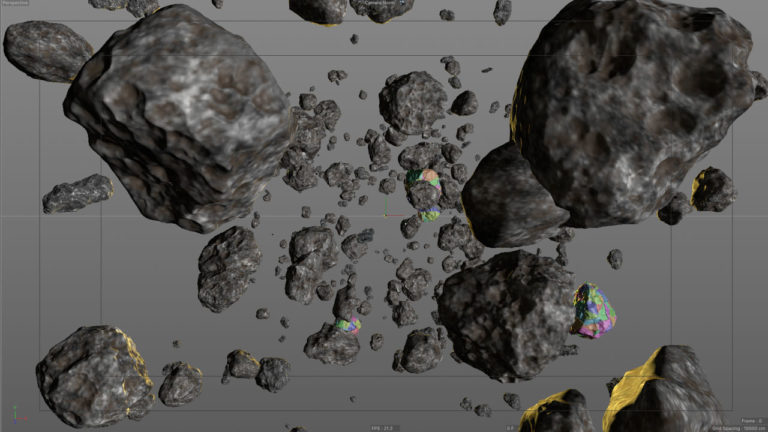DEEP DIVES
"Abstraction" - HP Antarctic Dome at Coachella
The Challenge
Create five segments for the immersive fulldome animation “Abstraction” for the HP Antarctic dome at the 2018 Coachella festival.
Our Solution
This project featured multiple artists including Mike “Beeple” Winkleman and Esteban Diacono, most of whom were assigned to tackle a single section. We were tasked with completing five segments, three of which were completely unique to each other. All of the segments utilized fracture effects and dynamic simulations to some extent. The director and creative lead, Tristan Ferriera, said we were assigned multiple segments because he and the producers were confident we could pull them all off in time for the festival.
BREATHE/BURST SEGMENTS
Initial rough sketches from the director showing the relationship of the action to the dome and audience. The action was to take place around 40° above the horizon of the dome. We later determined that angling the spherical camera 40° and animating it straight forward down the z-axis would keep the focus where we wanted but greatly simplify movement and transitioning between segments.
BREATHE/BURST required two basic effects. The first was to make it look like tiles of the interior dome were breathing. We pulsed a Cinema 4D Mograph effector through the dome to ripple the hexagonal tiles smaller, allowing light to peek though, timed to an audio track. With each ripple the inner section of the wall crumbles a bit. The Voronoi Fracture tool that had just been introduced in C4D was instrumental in making this work. Smaller bits of debris falling from the cracks were created with X-Particles emitting from crack-shaped geometry that increases in size with each ripple, generating more debris on each pass. On the climactic beat invisible collider objects smash into different areas of the wall to make debris fly towards the viewer and also fly along with the viewer as we move into the next scene. An invisible repulser object with a conical falloff deflects debris from flying too close to the camera/viewer. Multiple Wind objects helped blow debris down the tunnel and then disperse it. We sent our Cinema 4D project files to 360Art for final rendering and compositing. They reworked our materials to work with their Octane renderers.
EVOLUTION OF THOUGHT/SYNAPSE SEGMENTS
EVOLUTION OF THOUGHT also made generous use of the Voronoi fracture feature as these crystal objects smash into each other and shatter. We started with some stock models of crystal objects and then combined pieces to create several unique shapes. We had to keyframe flight paths to have the objects fly from behind or below the viewers and then, when the objects almost touched, switch on a 100% dynamic collision system to create realistic shatters and scatters. These had to happen at predetermined positions along the camera path, timed to hit the music cues. It took a lot of trial and error and multiple simulations. As before, an invisible cone prevented debris from getting too close to the camera. Transitioning to SYNAPSE, the last two objects had to collide but stick together. Some pieces fly off as new crystals grow from the merged object. An explosion ring generated by X-Particles accentuates this impact (mistimed in the final composite by 360Art). The merged object spins to reveal a tunnel through which the camera flies to transition to the next segment.
FALL SEGMENT
FALL, as in the other segments, utilized fractured objects and dynamic collision simulations, used here to create slower, more massive and majestic movement. We started with several stock models of asteroids. Along with the six colliding asteroids we created an immersive asteroid field in four groupings: Closest to the camera is a group of manually-placed asteroids to create dramatic fly-bys. Farther out is a tunnel of asteroids, cloned along the surface of a tube, then a hemisphere of mid-ground asteroids, and farthest out a hemisphere of background asteroids. We used random effectors to create positional variation in these asteroids, randomly animated their rotations, and used a noise parameter to create slow, random motion in space. A strong yellow light source created dramatic backlighting. As originally conceived this star element would be smaller and cast 3D volumetric light rays through the asteroids. This effect was simplified for the final and the light source was made much larger. At the end the camera dives towards a more-detailed stock model of an asteroid to transition to the final segment created by Esteban Diacono.
